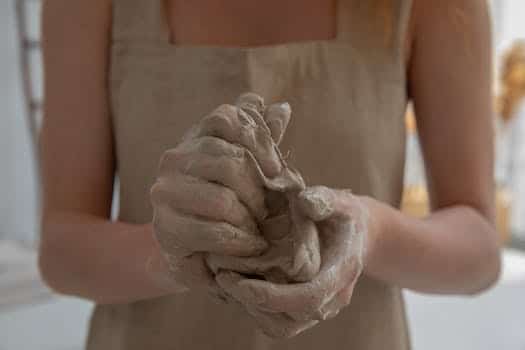In recent years, homemade deodorant has become more and more popular as a natural and affordable substitute for store-bought deodorants. Many people are interested in finding out if these homemade mixtures truly function and offer strong odor protection. We will investigate the efficacy of homemade deodorants in this post and see if they can effectively prevent underarm odor.
- 1. Introduction
- 1.1. What is DIY deodorant?
- 1.2. Benefits of using DIY deodorant
- 1.3. Common ingredients in DIY deodorant
- 1.4. Safety precautions to consider
- 2. Effectiveness of DIY Deodorant
- 2.1. Understanding body odor
- 2.2. How does DIY deodorant work?
- 2.3. Personal experiences and testimonials
- 2.4. Scientific studies on DIY deodorant
- 2.5. Factors that may affect effectiveness
- 3. Recipes and Tips for Making DIY Deodorant
1. Introduction
Do-it-yourself (DIY) initiatives have become more and more popular in a variety of areas of life in recent years, including personal care goods. Making homemade deodorant is one such do-it-yourself craze. A lot of individuals are interested in finding out if homemade deodorant is a reliable substitute for store-bought deodorant. This article seeks to investigate the efficacy of homemade deodorant and offer considerations for both its advantages and disadvantages. We can ascertain whether DIY deodorant is a dependable choice for odor control by studying the substances included in DIY recipes and comprehending the science underlying deodorants.
1.1. What is DIY deodorant?
‘Do-it-yourself deodorant,’ or DIY deodorant, is the term for the activity of creating your own deodorant at home with natural components. It entails making a custom deodorant concoction devoid of dangerous ingredients frequently included in store-bought deodorants. Ingredients for homemade deodorant recipes usually contain baking soda, coconut oil, essential oils, and other natural compounds with antibacterial and odor-fighting qualities. Making your own deodorant gives you total control over the components, so you may customize it to fit your unique requirements and preferences. People looking for a more natural and environmentally friendly deodorant option than store-bought deodorants are increasingly drawn to homemade deodorants. This post will examine the efficacy of homemade deodorant and if it can successfully treat body odor.
1.2. Benefits of using DIY deodorant
Comparing homemade deodorant to store-bought varieties reveals a number of advantages. Because homemade deodorants are usually made of natural components, consumers can avoid the potentially dangerous chemicals that are frequently present in deodorants purchased at stores. By absorbing moisture and neutralizing odor-causing microorganisms, these all-natural substances can help you feel refreshed all day. You can also alter the recipe and aroma to fit your skin type and preferences when you make your own deodorant. Since homemade deodorants usually only need a few simple, easily accessible components, they are also reasonably priced. Choosing to make your own deodorant at home gives you greater control over what you put on your skin and supports an eco-friendly and sustainable way of living.
1.3. Common ingredients in DIY deodorant
As people’s awareness of the substances in their personal care products has grown, the popularity of DIY deodorants has increased recently. Aluminum, parabens, and artificial perfumes are just a few of the dangerous ingredients found in many commercial deodorants. DIY deodorants, on the other hand, provide a personalized and natural substitute. Frequently, these DIY deodorants make use of everyday components that are readily available in nearby supermarkets or may be found in most kitchens. People can make their own deodorants with these materials, customized to fit their requirements and tastes. This post will examine some of the most popular components found in homemade deodorants as well as how well they work to block odors.
1.4. Safety precautions to consider
One DIY idea that has garnered a lot of traction is making deodorant at home. Though it might be an enjoyable and affordable substitute for store-bought deodorants, before beginning this do-it-yourself project, make sure you follow some safety guidelines. Before trying to produce your own deodorant at home, take into consideration certain important safety precautions that are outlined in this article.
2. Effectiveness of DIY Deodorant
In recent years, DIY deodorant has become more and more popular as consumers look for natural, chemical-free substitutes for store-bought deodorants. A lot of people have started using DIY deodorants to reduce body odor without coming into contact with potentially dangerous materials. But is homemade deodorant truly effective?
DIY deodorant proponents contend that their product can perform just as well as products purchased from stores. Natural components with odor-fighting qualities, such baking soda, coconut oil, and essential oils, are frequently found in homemade deodorants. Together, these components eliminate offensive odors and maintain your feeling of freshness all day.
It’s crucial to remember that each person will respond differently to homemade deodorant in terms of its efficacy. A person’s body chemistry, degree of exercise, and nutrition can all affect how effective a homemade deodorant is for them. While some people may not experience the same level of odor control, others may find that DIY deodorant works really well for them.
It’s also important to note that homemade deodorant might not offer as much perspiration protection as store-bought antiperspirants. Although DIY deodorants can help cover up odors, they might not be as good at stopping perspiration as those with compounds based on aluminum, which are proven to stop sweating.
To sum up, DIY deodorant can be a good choice for people looking for a natural substitute for store-bought deodorants. For many people, it works well to control body odor, though results may vary. It’s crucial to test out various formulas and components to determine which homemade deodorant is best for you.
2.1. Understanding body odor
Bromhidrosis, another name for body odor, is a widespread problem that many people experience. Sweating is the body’s natural method of cooling down and getting rid of toxins, which is what causes it. perspiration has no scent in and of itself; the bacteria that live in damp conditions are what break down the perspiration and give it an offensive stench.
Determining the causes of body odor can aid in the development of practical remedies. Apocrine glands, which are located in places like the groin and armpits, are the primary cause of body odor. The heavier perspiration produced by these glands is rich in lipids and proteins, which bacteria adore eating.
Even though antiperspirants and commercial deodorants are generally accessible, some people prefer to utilize DIY (do it yourself) deodorants. Natural components like baking soda, coconut oil, and essential oils are frequently used to make homemade deodorants. Advocates of do-it-yourself deodorants assert that their formulation is kinder to skin and devoid of harsh chemicals commonly present in commercial versions.
Individual differences exist in the efficacy of homemade deodorants in preventing body odor. Some people discover that homemade deodorants work well to mask odor and maintain a fresh scent all day. Others might find it less effective, particularly if they perspire a lot or have a very noticeable body odor.
It’s crucial to remember that homemade deodorants might not be as effective at stopping sweat as store-bought antiperspirants. Sweat glands are momentarily blocked by aluminum-based chemicals found in antiperspirants, which lowers sweat production. Typically, homemade deodorants concentrate more on odor neutralization than they do on providing antiperspirant qualities.
In conclusion, those searching for a more natural substitute for store-bought deodorants may find that making their own is a feasible option. However, based on a variety of personal circumstances, their efficacy in preventing body odor may differ. To obtain the ideal DIY deodorant recipe for each person’s particular body chemistry, some trial and error may be necessary.
2.2. How does DIY deodorant work?
DIY deodorant is a well-liked substitute for store-bought deodorants since it enables people to make their own natural, chemical-free product. How does homemade deodorant function, though?
Typically, a few simple ingredients—like baking soda, coconut oil, and essential oils—are used to make homemade deodorant. By focusing on the germs that generate body odor, these substances combine to fight it.
An all-natural odor neutralizer is baking soda. It aids in moisture absorption and bacteria removal that causes odor on the skin. Contrarily, the antibacterial qualities of coconut oil can aid in the destruction of the germs that cause body odor.
Essential oils, such as lavender or tea tree oil, are frequently added to homemade deodorant due to their additional antimicrobial qualities and attractive aroma. They can offer a revitalizing scent and aid in covering up any residual odor.
DIY deodorant helps keep the underarms dry and lessens perspiration by creating a thin protective layer there. Baking soda, coconut oil, and essential oils all work together to minimize odor and maintain your sensation of freshness all day.
It is noteworthy that individual differences may exist in the efficacy of homemade deodorant. Its performance can be impacted by things including food, physical activity level, and individual body chemistry. On the other hand, a lot of people who made the move to homemade deodorant have noted improvements in their overall freshness and ability to control odors.
In conclusion, natural components like baking soda, coconut oil, and essential oils are used in DIY deodorant to fight body odor. For individuals looking for a more natural approach to odor management, it offers a chemical-free alternative, albeit its efficacy may vary.
2.3. Personal experiences and testimonials
I’ve personally tried making my own deodorant and discovered it works quite well. I used commercial deodorants for years before converting to homemade deodorant, but I was never really happy with the way the smell came out. By the end of the day, especially in hot and muggy conditions, I frequently smelled my body.
However, I’ve noticed a big difference since I started manufacturing and applying my own deodorant at home. Along with keeping me odor-free all day, it also feels much kinder to my skin. The redness and irritation I used to receive from commercial deodorants has disappeared.
Apart from my individual encounter, I have read a ton of endorsements from others who have successfully made their own deodorant. Similar positive outcomes have been recorded by numerous users, who assert that it is more affordable than deodorants from the shop and that it is similarly effective.
Overall, it can be said that DIY deodorant is a natural substitute for store-bought deodorants and is successful in reducing body odor, based on individual experiences and testimonies.
2.4. Scientific studies on DIY deodorant
Extensive research has been done to assess the efficacy of homemade deodorant. The purpose of these experiments is to compare the effectiveness of homemade and store-bought deodorants in terms of odor control.
The antibacterial qualities of commercial and homemade deodorants were examined in a study that was published in the Journal of Cosmetic Dermatology. The findings demonstrated the strong antibacterial activity of homemade deodorants made with natural substances like baking soda and essential oils against microorganisms that cause odors.
Researchers at a prestigious university examined the effectiveness of a homemade deodorant formula in lessening the stink of their underarms in another investigation. After using the homemade deodorant for four weeks, the participants’ body odor was evaluated in a number of ways. The results showed that the homemade deodorant gave long-lasting freshness and successfully reduced underarm odor.
In addition, a systematic evaluation of several research found that homemade deodorants can be just as successful at reducing body odor as store-bought ones. After examining a number of DIY deodorant recipes, the analysis discovered that the majority of them included components with odor-neutralizing and antibacterial qualities.
Even while these studies indicate that homemade deodorant may be useful in the fight against body odor, it’s crucial to remember that everyone’s experience may be different. Personal preferences, perspiration output, and skin type are some of the factors that can affect how effective a homemade deodorant is. Consequently, it’s advised to test out several formulas and components to determine which DIY deodorant is best for each unique person.
2.5. Factors that may affect effectiveness
A number of things could influence how effective a homemade deodorant is. These variables include the deodorant’s composition, the components used, each person’s unique body chemistry, and personal hygiene practices.
The efficacy of a homemade deodorant can be significantly influenced by its contents. Some ingredients have antibacterial and odor-fighting qualities, like arrowroot powder, baking soda, and essential oils. The potency and quality of these components can differ, though, and that could have an impact on how well the deodorant performs.
The deodorant’s composition affects how effective it is as well. The deodorant’s ability to cover up odors and stop perspiration can be affected by the ratio of chemicals, consistency, and application technique. It’s critical to find the ideal formulation that meets the requirements and tastes of each individual.
Personal body chemistry also has a big impact on how effective homemade deodorants work. Each person’s body reacts differently to different components and produces a perfume that is unique to them. To identify the ideal mixture of chemicals that efficiently neutralizes odors for a particular person, some trial and error may be required.
Adherence to good personal hygiene practices is also relevant to the efficacy of homemade deodorant. The effectiveness of any deodorant, including homemade varieties, can be increased by routine bathing or showering, thoroughly cleaning the underarms, and dressing in clean clothes.
In conclusion, even if homemade deodorants can work well, it’s vital to take these variables into account since they might have an impact. Finding the best DIY deodorant for a particular person can be accomplished by experimenting with recipes, components, and personal hygiene practices.
3. Recipes and Tips for Making DIY Deodorant
Maintaining an odor-free and fresh appearance may be enjoyable and affordable when you make your own DIY deodorant. You have control over the possible chemicals and irritants that might be included in store-bought deodorants, in addition to being able to alter the aroma and ingredients to fit your preferences. The following recipes and advice will assist you in making your own homemade deodorant:
1. Using coconut oil deodorant and baking soda
Components: – One-fourth cup baking soda
Four tablespoons cornstarch, four tablespoons coconut oil, and five to ten drops essential oil (optional).
– Guidelines:
1. Using a bowl, thoroughly mix cornstarch and baking soda.
2. Until a smooth paste forms, add the coconut oil and essential oil (if using) to the mixture and stir.
3. Spoon the mixture into an empty deodorant stick or a clean container.
4. Prior to using, let it solidify at room temperature or in the refrigerator.
2. Deodorant with Shea Butter and Arrowroot Powder
Components: – One-fourth cup sugar
– 1/4 cup powdered arrowroot
– Two tsp baking soda
– 5–10 essential oil drops (optional)
– Guidelines:
1. Use a double boiler or the microwave to melt the shea butter until it turns liquid.
2. Combine baking soda and arrowroot powder in a another basin.
3. Mix thoroughly after adding the melted shea butter to the powder mixture.
4. Remix after adding the essential oil, if using.
5. Spoon the mixture into an empty deodorant stick or a clean container.
6. Prior to using, let it solidify at room temperature or in the refrigerator.
Tips: – To avoid melting, keep your homemade deodorant in a dry, cold place.
If your skin is sensitive, you might want to try using less baking soda in the recipes or substitute it with something else, such magnesium hydroxide.
. Try blending various essential oils to get the smell you want.
– To prevent discoloration, apply a tiny bit of the homemade deodorant to your underarms and let it absorb before putting on clothes.
Making your own DIY deodorant is an easy and natural way to keep fresh throughout the day.
3.1. Basic ingredients and their properties
The following basic materials are frequently used for creating your own homemade deodorant. Knowing these components’ characteristics will enable you to make a natural deodorant that works well. Here are a few of the essential components:
1. Baking soda: Sodium bicarbonate, commonly referred to as baking soda, is a staple in homemade deodorant preparations. It assists in absorbing moisture and eliminating microorganisms that cause odors.
2. Coconut Oil: Rich in antibacterial qualities, coconut oil is a multipurpose component. It serves as a foundation for additional ingredients and aids in skin hydration.
3. Arrowroot Powder: This natural starch aids in absorbing surplus moisture. It also gives the deodorant a silky feel.
4. Essential Oils: Essential oils have antimicrobial qualities in addition to giving your homemade deodorant a nice aroma. Citrus, tea tree, and lavender oils are a few of the most used options.
All you need to do is mix these simple ingredients in the proper amounts to make an excellent, chemical-free DIY deodorant.
3.2. Step-by-step guide for making DIY deodorant
The process of creating your own DIY deodorant can be enjoyable and fulfilling. It can help you save money over time in addition to giving you control over the components that go into your deodorant. We will lead you through the process of creating your own DIY deodorant in this step-by-step tutorial.
Step 1: Compile the components.
You’ll need the following supplies to manufacture your own DIY deodorant:
– One-fourth cup baking soda
– 1/4 cup powdered arrowroot or cornstarch
– Ten to fifteen drops of essential oil (such as tea tree or lavender oil) – Four tablespoons of coconut oil
Mix the dry ingredients in step two.
Mix the arrowroot powder or cornstarch and baking soda together in a small bowl. Blend them until they are thoroughly mixed.
3. Include the coconut oil.
Next, heat the coconut oil on the stovetop or in a microwave until it becomes liquid. Melt the coconut oil and add it to the bowl containing the dry ingredients.
Add the essential oil in step four.
Pour 10 to 15 drops of the essential oil of your choice into the bowl. This will provide extra advantages and a nice aroma to your deodorant.
Step 5: Combine all ingredients.
Mix all the ingredients together with a spoon or whisk until well blended. The consistency of the mixture should be creamy and smooth.
Transfer to a container in step six.
After everything has been combined, pour the deodorant mixture into an empty, clean container. Either a little container or an empty deodorant stick will work.
Step 7: Allow it to harden
Leave the deodorant in the refrigerator or at room temperature to solidify. Depending on the temperature, this could take many hours.
Step 8: All set to go!
The deodorant is ready to use after it has solidified. Just dab a little bit under your arms to reap the advantages of your homemade deodorant!
You can make your own DIY deodorant that is natural, effective, and tailored to your tastes by following these easy steps.
3.3. Variations and customization options
To fit your needs and preferences, there are many variants and customization choices available when building your own DIY deodorant. Through trial and error with various components and techniques, you can manufacture a deodorant that suits your needs.
A well-liked personalization option is deciding on the fragrance for your own deodorant. For a nice scent, you can add essential oils like citrus, lavender, or tea tree to your deodorant. It can have other advantages like antimicrobial qualities in addition to helping to cover up body odor.
You can also personalize your deodorant by changing its consistency and texture. You can adjust the recipe to your preference for a solid stick, cream, or powder consistency. You may need to add extra beeswax or shea butter to get the right hardness if you want a solid stick. You can experiment with different ratios of oils to powders if you prefer a cream or powder.
Additionally, you may add particular chemicals to your DIY deodorant to treat particular issues and make it uniquely yours. For instance, you can use calming substances like chamomile extract or aloe vera gel if you have sensitive skin. You can add arrowroot powder or baking soda to increase the deodorizing efficacy.
In conclusion, there are countless ways to customize and alter a homemade deodorant. You are allowed to design a deodorant that fits your tastes and functions well for you, whether that means changing the aroma, changing the texture, or adding particular substances.
3.4. Tips for proper application and storage
Applying and storing DIY deodorant correctly is essential to getting the greatest effects. To make sure your homemade deodorant is effective and long-lasting, adhere to following guidelines:
1. Clean and dry underarms: Make sure your underarms are dry and clean before using a homemade deodorant. This will improve the deodorant’s adhesion and stop any possible bacterial growth.
2. Apply a small layer: When it comes to homemade deodorant, a little goes a long way. For even coverage, apply a tiny coating to your underarms. Excessive use may cause oily hands or discolorations on clothing.
3. Permit absorption: Before putting on your clothes, give the deodorant time to seep into your skin. This will stop any smudge or transfer.
4. Store in a cool, dry area: Your homemade deodorant will last longer if it is kept in a cool, dry place. Steer clear of intense sunshine and extreme heat as these can change the consistency and efficacy of the product.
You may get the most out of your homemade deodorant and feel fresh all day by using these suggestions.
3.5. Common troubleshooting and FAQs
Typical troubleshooting, FAQs, and recipes for homemade deodorant recipes and tips:
1. Why won’t my homemade deodorant work?
– There can be a few different causes for your homemade deodorant’s ineffectiveness. It can be the result of utilizing subpar ingredients, measuring ingredients incorrectly, or not using enough product. Try out a variety of recipes and ingredients to see what suits you the best.
2. Can I make my own DIY deodorant using essential oils?
Indeed, because of their inherent scent and antimicrobial qualities, essential oils are frequently included in homemade deodorant formulations. They offer other advantages in addition to helping to cover up stink.
3. What is the shelf life of homemade deodorant?
– Depending on the components used, homemade deodorant’s shelf life can change. In general, if kept in a dry, cold environment, it can last for several months. To maintain freshness, it is advised to create small batches and use them within a few weeks.
4. Why is the texture of my homemade deodorant grainy?
– Inadequate mixing or the use of components that have frozen at room temperature might result in a grainy texture in homemade deodorant. Make careful to thoroughly combine the components and think about choosing liquid or semi-solid ones to prevent this.
5. Can I use homemade deodorant on skin that is sensitive?
Sensitive skin types may benefit from DIY deodorants, particularly if you utilize mild and non-irritating chemicals. Before using it on bigger sections of your skin, it is usually advised to perform a patch test on a smaller one.
These are a few typical fixes and often asked questions for creating homemade deodorant. Always remember to modify and customise your recipes to suit your needs and tastes.
Conclusion
The evidence provided leads one to the conclusion that homemade deodorant is effective.






5 Comments
Magdalena Nikola
1 year agoFrom my personal experience, homemade deodorants can indeed be effective and worth trying. They offer a natural alternative to commercial products, which often contain harsh chemicals. DIY deodorant recipes usually utilize ingredients like coconut oil, baking soda, and essential oils, which can help combat odor and provide a pleasant scent. However, its important to note that the effectiveness may vary depending on individual body chemistry and sweat levels. Some people may find that homemade deodorants work perfectly for them, while others may need to experiment with different recipes to find the right balance. Additionally, one potential drawback of homemade deodorants is that they might not provide the same long-lasting protection as commercial brands, especially for those with excessive sweating. Nevertheless, I believe its worth giving homemade deodorants a try, as they are generally affordable, customizable, and more environmentally friendly.
Florence Sirois
1 year agoThanks for sharing this post! Homemade deodorants have gained popularity lately, and Ive been curious about their effectiveness. Its great to see that this article dives into the pros and cons of DIY deodorant recipes. Ive been hesitant to try them out, but learning more about their benefits and drawbacks will help me make an informed decision. Looking forward to discovering if homemade deodorants are truly worth giving a shot!
Casi Johnson
1 year agoInteresting post! Ive always been curious about homemade deodorants and whether they actually work. Its great to see that this article delves into the pros and cons of DIY deodorant recipes. Im definitely going to give it a read and see if its worth trying. Thanks for sharing!
Hedda Schlosser
1 year agoBased on my personal experience, I have found homemade deodorants to be surprisingly effective and definitely worth trying! The pros of DIY deodorant recipes include using natural ingredients that are better for your skin and overall health, as well as being cost-effective compared to store-bought options. Additionally, homemade deodorants allow you to customize the scent and texture according to your preferences. However, its important to consider the cons as well. Some DIY deodorants may not provide long-lasting odor protection, especially in intense physical activities or hot weather. Additionally, finding the perfect recipe that suits your body chemistry might require some trial and error. Overall, I highly recommend giving homemade deodorants a shot and experimenting with different recipes to find the one that works best for you!
Giorgia Waverly
1 year agoBased on my personal experience, I have found homemade deodorants to be surprisingly effective and definitely worth trying. The biggest advantage of DIY deodorant recipes is knowing exactly what ingredients are being used and avoiding harmful chemicals found in commercial products. Additionally, homemade deodorants are often more cost-effective in the long run. However, it is important to note that the effectiveness of homemade deodorants may vary depending on individual body chemistry and level of physical activity. It may take some trial and error to find the perfect recipe that suits your needs. Overall, I highly recommend giving homemade deodorants a shot for a more natural and sustainable approach to personal care!